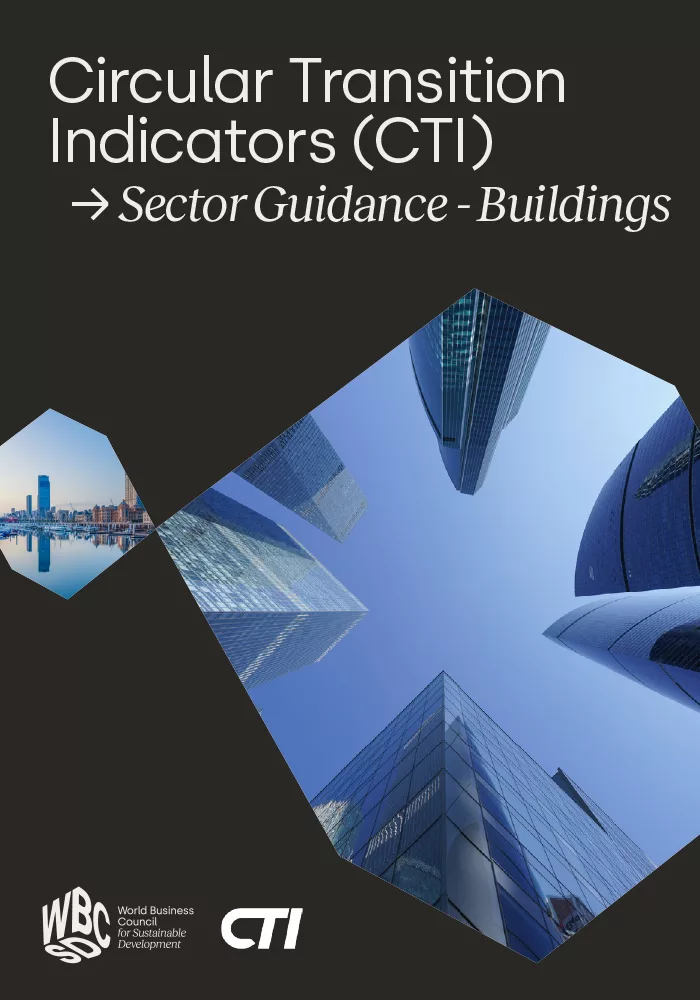Circular Transition Indicators (CTI) for Buildings – Sector Guidance
Published: May 13, 2025

The built environment is one of the largest contributors to global environmental challenges. It is responsible for nearly 40% of global CO2 emissions, with material extraction, production and disposal driving resource depletion at an unsustainable rate. Buildings account for 50% of global material use, yet only 10% of materials re-enter the economy after demolition. At the same time, regulatory pressures, investor expectations and market demand for sustainable and circular business models are accelerating.
Developed in partnership with Arup and Arcadis and in consultation with an extensive stakeholder group, the CTI for Buildings guidance introduces a lifecycle-based approach for companies in the sector to understand and improve the circular performance of their buildings and projects, supporting internal decision making and initiating value chain collaboration.
Building on WBCSD’s globally recognized Circular Transition Indicators (CTI), CTI for Buildings adopts an extensive list of metrics that helps companies:
- Set circularity roadmaps and measurable targets;
- Track progress on sustainability goals and enhance regulatory compliance;
- Reduce up to 96% of embodied carbon emissions by 2050;
- Boost investor confidence and offer a competitive advantage.
Seize this opportunity to drive your business toward a resource-efficient, low-carbon and regenerative built environment. Download the guide now.